I am a Full Professor and the Head of Chair of Neuromuscular Robotics at the University of Twente where I also direct the NEUBOTICS Lab - Neuromechanics and Neuromuscular Robotics Lab.
My research focuses on understanding how human movement emerges from the interplay between the nervous and the musculoskeletal systems. My goal is to translate such knowledge for the development of symbiotic assistive robots such as exoskeletons and bionic limbs.
On these topics I have obtained blue-sky research funding including the European Research Council (ERC) Starting Grant, an ERC Consolidator Grant and two ERC Proof of Concept Grants. I have contributed to develop widely used open-source software (e.g., CEINMS, MyoSuite) and I have created patented technology with leading companies (e.g, OttoBock HealthCare).
I conducted my PhD (2009-2011) across the Universities of Padova (Italy), Western Australia (Australia) and Stanford (USA). I continued with a post-doc at the University of Göttingen (Germany, 2011) where I become Junior Research Group Leader in 2015. Since In April 2017 I joined the University of Twente as a tenure-track scientist where I am leading an expanding independent research group.
Throughout my career I received awards (e.g. OpenSim Outstanding Research), was guest editor in academic journals (e.g. IEEE TBME, Front Comput Neurosci), and was Workshop Chair at leading congresses (e.g. IEEE BioRob 2018) in the field.
I am currently chairing the IEEE RAS Technical Committee on BioRobotics. I am Associate Editor at the IEEE Transactions on Neural Systems and Rehabilitation Engineering: https://www.embs.org/tnsre/associate-editors/. Moreover, I am a member of leading scientific societies spanning across the fields of robotics and biomechanics including: IEEE Robotics and Automation Society, IEEE Engineering in Medicine and Biology Society, IEEE International Consortium on Rehabilitation Robotics, and European Society of Biomechanics.
More about me via the UT Featured Scientist page.
Keywords: model-based control; model-based myoelectric control; wearable robot; electromyography; neuromechanics; biomechanics; neuromusculoskeletal modelling; human movement.
Expertise
Computer Science
- Models
- Control
- Robotics
Medicine and Dentistry
- Muscle
- Electromyography
- Joint
- Exoskeleton
Engineering
- Joints (Structural Components)
Organisations
For detailed information about my research please visit my research group website.
My goal is to establish a unique roadmap for discovering fundamental principles of movement at the interface between humans and machines. My research focuses on understanding the neuro-musculo-skeletal mechanisms underlying human movement and how these are altered by impairment. I apply neuro-mechanical modelling and electrophysiological signal processing, in a translational way, to develop real-time model-based control technologies for restoring natural motor function and for enhancing human health.
Software Highlights:
- CEINMS-RT: an open-source framework for the continuous neuro-mechanical model-based control of wearable robots. Massimo Sartori, Mohamed I Refai, Lucas Avanci Gaudio, Christopher P Cop, Donatella Simonetti, Federica Damonte, Matthew Hambly, David G Lloyd, Claudio Pizzolato, Guillaume Durandau. Link to Website.
- MyoSuite: An embodied AI platform that unifies neural and motor intelligence Vittorio Caggiano, Huawei Wang, Guillaume Durandau, Massimo Sartori, Vikash Kumar. Link to Website.
- NeurIPS-MyoChallenge 2023: Learning Physiological Agility & Dexterity. Coming up too at this Website.
- NeurIPS-MyoChallenge 2022: Learning contact-rich manipulation using a musculoskeletal hand. Vittorio Caggiano, Huawei Wang, Guillaume Durandau, Seungmoon Song, Yuval Tassa, Massimo Sartori, Vikash Kumar. Link to Website.
- MyoSim: Fast and physiologically realistic MuJoCo models for musculoskeletal and exoskeletal studies. Huawei Wang*, Vittorio Caggiano*, Guillaume Durandau, Massimo Sartori, Vikash Kumar. Link to Website.
- CEINMS: A toolbox to investigate the influence of different neural control solutions on the prediction of muscle excitation and joint moments during dynamic motor tasks. Claudio Pizzolato, David G Lloyd, Massimo Sartori, Elena Ceseracciu, Thor F Besier, Benjamin J Fregly, Monica Reggiani. Link to Website.
- MOtoNMS: A MATLAB toolbox to process motion data for neuromusculoskeletal modeling and simulation. A Mantoan, C Pizzolato, M Sartori, Z Sawacha, C Cobelli, M Reggiani. Website.
Check out how we interface humans with wearable robot:
- Check my Lab: Neuromechanical Modelling and Engineering Lab.
- Check example videos on my Lab's YouTube Channel.
- Listen to our podcast on AI-powered Digital Human Twins.
- See our publications below:
Publications
2025
2024
Research profiles
I coordinate and contribute to Master-level curses including Biomechanics of Human Movement and Biomechatronics respectively. The Chair I direct also contributes to the BSc Minor in Biorobotics.
Affiliated study programs
Courses academic year 2025/2026
Courses in the current academic year are added at the moment they are finalised in the Osiris system. Therefore it is possible that the list is not yet complete for the whole academic year.
- 193640010 - Capita Selecta BME
- 193640999 - Internship BME
- 193650999 - Masters Assignment
- 195799152 - Internship
- 201100179 - Graduation Project
- 201400462 - Internship S&C
- 201600187 - Individual Project
- 201800156 - Biomechanics of human movement
- 202000249 - Master Graduation Assignment
- 202000250 - Internship
- 202200116 - Capita Selecta Robotics
- 202200119 - Academic Skills Project
- 202200120 - Internship ROB
- 202200122 - MSc-Thesis Project
- 202300349 - Internship ROB / ME
- 202400318 - M12 BSc Assignment BMT
- 202500385 - Internship ROB / AM
Courses academic year 2024/2025
- 191150460 - Biomechanical Eng. - Capita Selecta
- 191199198 - Master Graduation Assignment
- 193640010 - Capita Selecta BME
- 193640999 - Internship BME
- 193650999 - Masters Assignment
- 195799152 - Internship
- 201100179 - Graduation Project
- 201200133 - Biomechatronics
- 201400462 - Internship S&C
- 201600187 - Individual Project
- 201800156 - Biomechanics of human movement
- 202000249 - Master Graduation Assignment
- 202000250 - Internship
- 202000670 - Bachelor Assignment
- 202200116 - Capita Selecta Robotics
- 202200119 - Academic Skills Project
- 202200120 - Internship ROB
- 202200122 - MSc-Thesis Project
- 202300349 - Internship ROB/I-TECH
- 202400318 - M12 BSc Assignment BMT
In 2016, 2018 and 2023 I was awarded a EU H2020 Marie Skłodowska-Curie Individual Fellowship (MIMICS) and an ERC Starting Grant (INTERACT) and an ERC Consolidator Grant (ROBOREACTOR) respectively. In 2023 I obtained an ERC Proof of Concept Grant (SMARTSEMS). I am co-leading a EU H2020 Marie Skłodowska-Curie Innovative Training Network on Bionic Limb Control (SimBionics), an EU-EFRO project on smart sensing garments for stroke rehabilitation (MyoStride), an EU H2020 Project of human-robot interaction for injury risk prevention (SOPHIA), and Horizon Europe Project on smart garments for human movement empowerment (SWAG).
I previously led scientific activities on neuro-mechanical modelling and prosthetic/orthotic technologies on European and National projects including the ERC Advanced Grant DEMOVE (2011-2016), the FP7 EU Project H2R (2013-2016) and the BMBF Innovation Cluster INOPRO (2016-2020). I have served as Scientific Advisory Board member in the FP7 EU Project BioMot (2013-2016).
Current projects
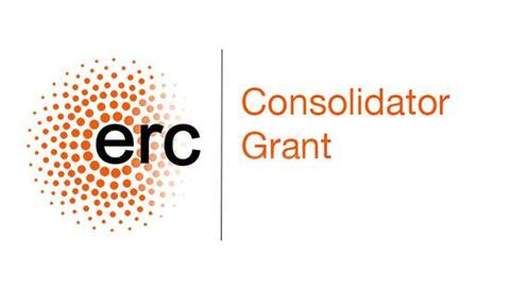
ROBOREACTOR: Robotic bioreactors for the longitudinal control of restorative remodelling in the human skeletal muscle
Muscle damage impairs vital functions e.g., movement, respiration. Recovery depends on the long-term interaction between neuromuscular and immune systems. If exposed to regimens of electro-mechanical stimuli, damaged muscles can remodel new structural properties over days. Inflammation at the damage site is initially needed to clear debris but if prolonged, as in many neuromuscular disorders, it may hamper structural remodeling. Rehabilitation robots such as exoskeletons and neurostimulators can deliver tunable stimuli to muscles. However, although they can compensate for lack of e.g., muscle strength (within seconds), they cannot control for how muscles remodel across days. ROBOREACTOR shifts the paradigm, to control muscle key inflammation and remodeling factors over large time scales, where the knowledge gap is. 1) I will develop robots that deliver electro-mechanical stimuli to fibres and innervating spinal neurons in humans across weeks. By combining biosignal processing and modeling, I will predict how robot-stimuli influence key inflammation and remodeling processes in vivo, with cell-scale resolution. 2) I will engineer human tissues in vitro and develop robots that can expose tissues to the same stimuli experienced by muscles during robotic training in vivo. This will enable modeling subcellular inflammation and remodeling factors, with detail not attained in humans. 3) I will fit subcellular models in vitro and embed them in multi-scale models built in vivo. This will create new model-based controllers to demonstrate how robots optimize for inflammation to enhance, otherwise hampered remodeling. With a focus on neural and muscular dependences in post-stroke subjects, I propose muscle remodeling as a proxy for neuromuscular repair, a new concept in neurorobotics. This opens to chronic robotic bioreactors, for maintenance of skeletal, cardiac, tubular organs; revisiting fundamental principles of human-robot interaction with broad impact on health.
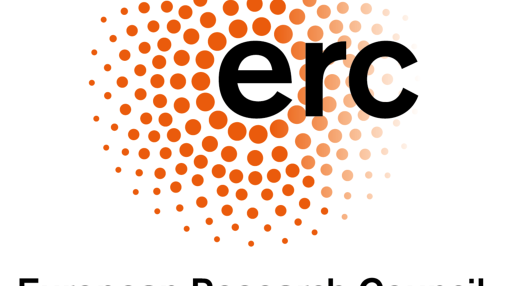
SMARTSENS: Smart wear for sensing the neuromusculoskeletal system during human movement in vivo
ERC Proof of Concept Grant: Smart wear for sensing the neuromusculoskeletal system during human movement in vivo
Neurological injuries such as stroke or spinal cord injury, leave 5 million people disabled worldwide annually, drastically impairing individuals' ability to move independently. The main element hampering efficacy of current neuro-rehabilitation procedures is the inability of sensing the activity of neural cells involved in the control of movement, along with the movement-generating mechanical force produced by innervated muscle-tendon units, in the intact moving human in vivo. Current technologies for sensing the neuromusculoskeletal system rely on expensive, large, and bulky sensing devices that can only be used in the highly controlled settings of research laboratories. Therefore, a wearable, rapid-to-wear system that could track function in a person’s motor neuron activity along with associated function in muscle, tendon and joint function would revolutionise current neuro-rehabilitation paradigms. SMARTSENS proposes a fully wearable, non-invasive solution to monitor a range of clinically relevant neuromuscular parameters, which currently could only be extracted in constrained laboratory settings via lengthy procedures. SMARTSENS enables measuring such information during daily life activities using a sensorised smart wear that is unobstructive and rapid to wear. This will enable continuous monitoring of the human neuromusculoskeletal system, which will disrupt current movement-measuring and diagnostic systems, by enabling causal understanding of the activity of neural and musculoskeletal structures in vivo at a resolution not considered before.
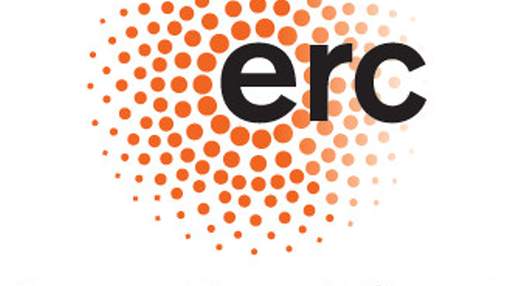
INTERACT: Modelling the neuromusculoskeletal system across spatiotemporal scales for a new paradigm of humanmachine motor interaction
INTERACT
Neurological injuries such as stroke or spinal cord injury leave millions of people disabled worldwide every year. However, for these individuals recovery is often suboptimal. The impact of current neuro-rehabilitation machines is hampered by limited knowledge of their physical interaction with the human body. Motor recovery requires positive neuro-muscular adaptation to be steered over time. If we could predict such adaptation and control it, to induce a positive change in the future, then a new era in rehabilitation robotics would begin. INTERACT will address this challenge by combining spinal cord electrical-stimulation and robotic exoskeletons with a new class of predictive multi-scale models of the neuromuscular system. This will enable robots to autonomously discover the electro-mechanical stimuli needed for repairing motor function over time. INTERACT will answer fundamental questions in movement neuromechanics via novel principles of human-machine interaction, with broad impact on bioengineering and robotics.
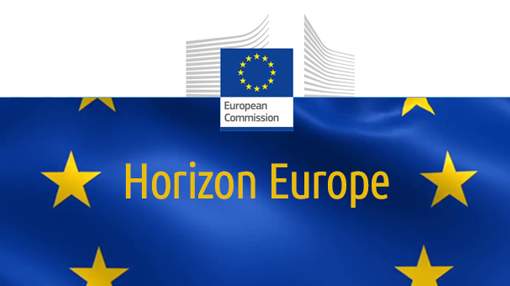
S.W.A.G.: Soft wearable assistive garments for human empowerment
Horizon Europe (CL4-Digital Emerging): Soft wearable assistive garments for human empowerment
Soft robotics has become one of the fastest growing fields over the last decade, and the development of technologies related to the associated modelling, sensing, actuation and control challenges has flourished as part of the field’s impetus. Soft robots have been demonstrated in diverse applications such as wearable devices, mobile or locomotive robots, as well as soft manipulators. Soft lower extremity exoskeletons ( “soft wearable robotics (SWRs)) are one of the most challenging research topics, and require multidisciplinary approaches involving diverse fields such as neuroscience, biomechanics, robot control, ergonomics and other fields. SWAG aims to explore a fundamentally new approach to engineering soft structures that omit fully rigid materials for inflatable ones made from high-strength fabrics and films when manufacturing human-assistive exoskeletal devices that target strainprone segments of the human body (i.e. lower body and core). Such soft wearable adaptive garments with actuation capabilities offer higher variable stiffness and force-to-weight ratios compared to other existing methods, and simultaneously entirely conform to each joint’s intricate kinematics. Because of this, new design approaches can be used as building blocks to realise complete assistance for multi-degree-of-freedom joints, such as the ankle or hip, by adapting flexible and conforming motions achieved by continuum robot designs. SWAG’s advances will demonstrated in 4 different application scenarios. The project brings together 13 partners from 5 EU countries and the UK. The partners consist of an interdisciplinary combination of leading academics with very strong track records in their respective fields. They are supported by RTOs with demonstrated capabilities of developing and validating application-driven solutions, as well as two commercial partners aiming to lead the exploitation of SWAG’s outcomes.
MyoStride: portable HDEMG-driven digital human twins in the clinical practice
In the Netherlands, 265,000 patients suffer every year from neurological or neuromuscular disorders, such as a stroke, spinal cord injuries or cerebral palsy. These conditions have a major impact on mobility due to, among other things, reduced muscle functions in the lower leg. Rehabilitation therefore focuses mainly on restoring these muscle functions and preventing further deterioration. However, the precise effectiveness of treatment cannot be properly measured. Practitioners can only rely on their observations, but have no insight into the activity of muscle groups. This leads to suboptimal and inefficient care. As a result, rehabilitation often takes longer than necessary and recovery is not optimal. The consortium wants to change this with the development of a wearable device to measure the activity of the muscle groups in the lower leg during rehabilitation. The basis for this is a prototype technology of a 'smart sock': the MyoStride. This was developed by TMSi, the Sint Maartenskliniek and the University of Twente in a previous ERDF project into a validated prototype at TRL level 5. They want to further develop and demonstrate this technology in this project, together with Moveshelf. The goal is to realize a new prototype that is, among other things, completely wireless, can be automatically calibrated and is integrated with the practitioner's IT systems. The developments are taking place in phases in the R&D departments of the SMEs involved and are tested in a practical setting in the Sint Maartenskliniek. In the first phase, the emphasis is on collecting additional data on the use of the technology in patients with a stroke, spinal cord injury, cerebral palsy or muscle disease. The developers use this data to improve the technology and test its suitability for these different patient groups. In the second phase, the new MyoStride will be used in at least 50 patients from these groups. The intended result is a proven and scalable technology, ready for medical certification. The intended technology makes it possible to accurately monitor the muscle activity of patients during a rehabilitation process in both rehabilitation clinics and physiotherapy practices. This gives the practitioners concrete insight into (the lack of) progress, so that they can adjust the treatments accordingly. Moreover, this ensures a much better transfer of data between the clinic and the physiotherapist. It is expected that the technology can prevent approximately 500,000 rehabilitation treatments annually and help save €20 million in healthcare costs.
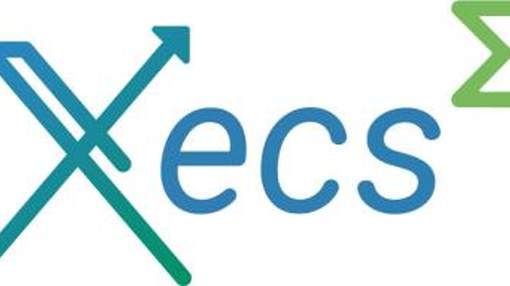
SonoSkin: Wearable ultrasound for continuous monitoring and diagnostics
Fully integrated, miniaturised MEMS-based scanning ultrasound systems will be developed and applied in two use cases: lung monitoring and musculoskeletal health monitoring. In addition, an innovative reference design for wearable 3D ultrasound products will be developed. Edge AI combined with, musculoskeletal modelling and 3D ultrasound data acquisition will assist the user in the optimal placement of the wearable ultrasound device, and extract from the 3D volume scan the relevant clinical information.
Finished projects

SimBionics
Neuromechanical Simulation and Sensory Feedback for the Control of Bionic Legs
Robotic lower limb prostheses, or bionic legs, have underwent tremendous mechatronic advances in the past decade. However, current prosthesis control interfaces are still sub-optimal leading to inefficient walking. To address this limit, there is need for highly trained professionals that work at the intersection of academic research, clinical assessment and market translation. However, current doctoral training programs do not equip candidates with the complex skillset required to develop prosthetic limbs. SimBionics will establish a comprehensive training program that will equip Early Stage Researchers (ESRs) with the engineering, clinical and entrepreneurial skills required to bring an idea into the market. SimBionics brings together two internationally recognized academic centers, one clinical center and one of the world leading companies in prosthetics. Four ESRs will be trained to develop a radically new control interface that integrates, for the first time, neuromechanical modeling and artificial sensory feedback. This will enable bionic legs to mimic the mechanics of their biological counterparts, so that amputees perceive the prosthesis as an extension of their own body. ESR training will cover all phases of development; from technology conceptualization to translation into a successful product. ESRs will learn to investigate user and stakeholder requirements. They will learn regulatory aspects for medical products, reimbursement mechanisms, intellectual property, and elements that can block successful development. ESRs will thus receive a tailored career development plan including skills acquisition, project/teamwork management, and open science/gender aspects. Outreach activities will be realized to improve public understanding of SimBionics’ socio-economical potentials and clinical benefits. SimBionics will enhance ESRs’ career perspectives and establish a reference for technology development training program.

ExoAid: 'PERSPECTIEF' Programme in Wearable Robotics
The programme 'wearable robotics' is led by UT Professor Herman van der Kooij. This is a national multi-centric project involving Dutch universities and European companies. I am co-responsible for one of the 8 sub-projects constituting the global initiative. The project aims at the development of so-called Exo-Aids: soft, comfortable robot technology supporting smooth and versatile movements. Patients with a damaged spinal cord or loss of muscle power, can come out of their wheelchair and stand up without needing crutches. Another application of wearable robots is preventing job-related injuries, like the lower back pain people are suffering from when doing heavy work.
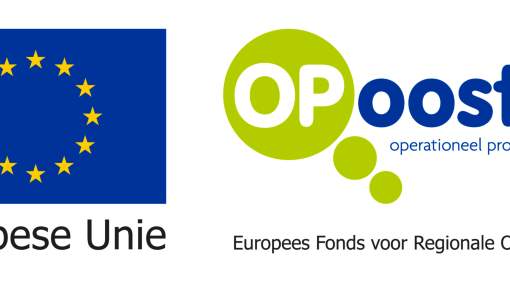
GUTS: Get under the skin
Over 15 million people suffer from stroke each year worldwide. However, current neuro-rehabilitation treatments are sub-optimal. The main reason is that stroke movement assessment is currently done using subjective and not precise techniques. This project aims at transforming current stroke rehabilitation, based on therapist's subjective assessments, towards personalized treatment based on objective quantitative assessments of muscle function. GUTs will develop a soft and stretchable leg covering for measuring high-density electromyography, joint kinematics and musculoskeletal forces. The availability of this information in the clinics will transform the way a treatment is designed, planned and performed. The project involves a consortium of companies, universities and medical clinics including: the University of Twente, TMSi, Bard.zo, and Sint Maartenskliniek
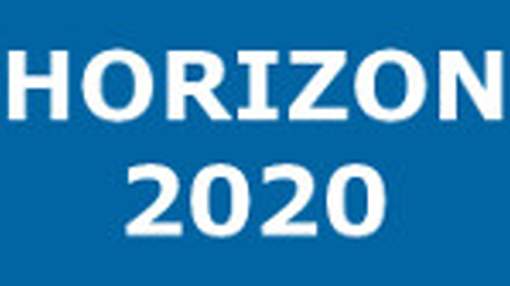
Electromyography-driven musculoskeletal modelling for biomimetic myoelectric control of prostheses with variable stiffness actuators
Upper limb loss affects 94.000 individuals in Europe. Advanced treatments rely on myoelectric prostheses controlled by amputees’ electromyograms or EMG. Despite expected benefits, today's schemes provide limited re-gain of functionality and lack of bio-mimesis, i.e. they use: (1) direct mapping between EMG and prosthesis joint angle, disregarding underlying neuromusculoskeletal processes, and failing to generalize to unseen conditions (robustness lack), (2) stiff actuators not mimicking biological compliant joints, preventing natural motion (functionality lack). MIMICS proposes a biomimetic paradigm: (1) a modelling formulation that simulates amputee’s phantom limb musculoskeletal dynamics as controlled by EMGs, and (2) prostheses with variable stiffness “soft” actuators. This opens to next-generation “soft” prostheses that can mimic biological limb functionality and robustness; a priority of current European policies and technology roadmaps, with estimated initial markets for functional myoelectric prostheses of €1 billion. MIMICS combines required interdisciplinary skills on soft actuation (host), neuromusculoskeletal modelling (fellow), and clinical bionic reconstruction (secondment). The career development plan is tailored on fellow’s needs: new skills acquisition (soft actuation/clinical prosthetics), project/teamwork management, open science/gender aspects care, ERC grant writing support. The action transfers fellow’s pre-acquired knowledge to the host and opens cooperation with secondment institute, thus increasing host’s visibility in myoelectric control and clinical prosthetics. The secondment expands MIMICS outcomes to boarder clinical perspectives and boosts knowledge transfer among organizations. Outreach activities plan to improve public understanding of MIMICS achievements, socio-economical potentials and clinical benefits. This all is set to improve fellow’s career prospects and form a European network of excellence in neurorehabilitation technologies
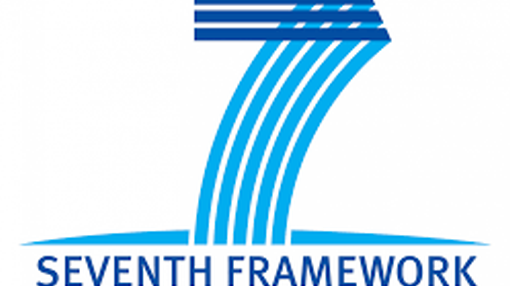
H2R: Integrative Approach for the Emergence of Human-like Locomotion
The major drawbacks of existing walking bipeds are related to stability, energy consumption, and robustness to unknown disturbances. In healthy humans, walking emerges naturally from a hierarchical organization and combination of motor control mechanisms. The result of this process is a highly efficient, stable and robust gait. The goal of H2R project is to demonstrate human-like gait and posture in a controlled compliant biped robot as a result of a combination of the most relevant motor control and cognitive mechanisms found in humans. In order to achieve this goal, we will adopt a threefold process: 1. Investigating the human behavior in order to formalize the most crucial biomechanical and neuromotor principles of walking and standing. For more information visit the section Studying humans 2. Testing the formalized biological concepts, by their integration into currently existing robotic platforms. At the same time, we will develop a new biped (namely H2R biped), by iteratively including the components and methods successfully tested. For more information, visit the section Developing robots 3. Giving birth to an internationally validated benchmarking scheme to test the human-like properties of robotic bipeds. This process will strongly rely on worldwide participation of other research groups, through workshops, seminars, and networking activities. For more information, visit the section Benchmarking
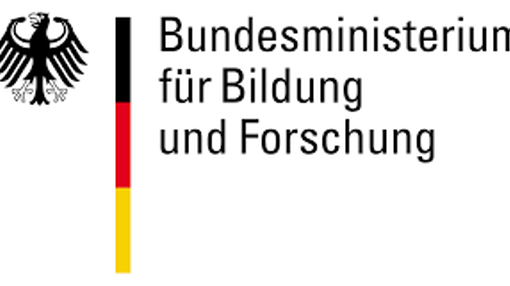
INOPRO: Intelligent Orthotics and Prosthetics for Enhanced Human-Machine Interaction (INOPRO)
https://foerderportal.bund.de/foekat/jsp/SucheAction.do?actionMode=view&fkz=13N14909

SOPHIA
Socio-physical Interaction Skills for Cooperative Human-Robot Systems in Agile Production
Collaborative robotics has established itself as a major force in pushing forward highly adaptive and flexible production paradigms in European large and small-medium enterprises. It is contributing to the sustainability and enhancement of Europe’s efficient and competitive manufacturing, to reshoring production, and to economic growth. However, still today the potential of collaborative technologies is largely underexploited. Indeed, collaborative robots are most often designed to coexist and to safely share a working space with humans. They are rarely thought to enter in direct socio-physical contact with humans to perceive, understand, and react to their distress or needs, and to enable them to work more productively and efficiently through better ergonomics. SOPHIA responds to this need by developing a new generation of socially cooperative human-robot systems in agile production. Its modular core technologies will enable dynamic state monitoring of the human-robot pair and anticipatory robot behaviours to: (1) improve human ergonomics, trust in automation, and productivity in manufacturing environments, and (2) achieve a reconfigurable, flexible, and resource-efficient production. By advancing the decisional autonomy and interaction ability of its innovative collaborative systems, SOPHIA will contribute to the reduction of work-related musculoskeletal disorders, the single largest category of work-related injuries and responsible for 30% of all workers’ compensation costs. SOPHIA’s societal relevance and the research groups’ experience in acceptability and standardization aspects of its core technologies will ensure their comfort-of-use by industrial workers, and the underlying design compliance to standards, thus strengthening the competitiveness in European manufacturing. We will illustrate and verify SOPHIA usability through the exploration of three real-world use-cases encouraging potential customers to integrate our core technologies in their workflow.
YOUTUBE:
- Subscribe to the YouTube channel of my lab to be up to date with our latest research in model-based-control, neuromechanics and wearable robotics. Just follow this link.
PODCAST:
- Listen to our podcast on AI-powered Digital Human Twins from this link.
ON DUTCH TV:
- Watch the NPO2's Focus show on the Ukraine war and amputations featuring our work on bionic legs.
In the press
A selection of news items
- ERC Consolidator Grant ROBOREACTOR Awarded: https://www.utwente.nl/nieuws/2023/11/1250621/erc-consolidator-grant-voor-drie-wetenschappers-van-de-universiteit-twente
- Collaboration with Meta AI: Machine learning meets fingers, hands and elbows for enhanced robotic therapy | News | CORDIS | European Commission (europa.eu)
- The EU Research Magazine featuring an article on my ERC Starting Grant INTERACT: https://issuu.com/euresearcher/docs/interact_eur33_h_res
- My Lab's research featured as part of the University Funding Campaign: Biologische kunstorganen en Biorobotica Looppakken.
- My Shaping 2030 interview on academia careers.
- My Featured Scientist Page from the University of Twente.
- My Best supervisor award from Twente Graduate School.
- Our work on model-based control featured on VPRO National Science Quitz (2018)
- My talk at the University Dies Natalis 2018
- ERC Starting Grant awarded on model-based control and human-machine interaction (2018)
- Model-based myocontrol of prostheses on NU.nl (2018)
- Towards bionic limbs controlled via spinal motor neuron discharges on Nature Biomed Eng (2018)
- Neuro-Musculo-Skeletal Modelling (2017)
- Biomimetic Humanoid Robotics (2017)
- My Google Plus Account
Address

University of Twente
Horst Complex (building no. 20), room W111
De Horst 2
7522 LW Enschede
Netherlands
University of Twente
Horst Complex W111
P.O. Box 217
7500 AE Enschede
Netherlands